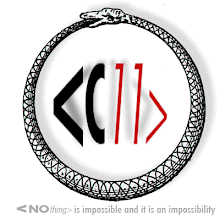
CLICK ON THE IMAGE TO ENLARGE
When questioned by one of this site's readers about this necklace's provenance the seller said "thank you for your question and comment. I gather you believe the shell necklace is not a necklace made by aboriginals, are you able to enlighten me as to who you think may have made a necklace like this and how would you derscribe authentic aboriginal? I have no authenticity or document, all I can state is what I put in my listing and what was relayed to me. The listing states vintage aboriginal shells, the word authentic is in the description and it was meant to refer that this is an aboriginal necklace made with authentic maireener shells. As you know they were made and sold in Tasmania by aboriginals to tourists for who knows how long. I have seen and had a number over the years of all different colours, everyone I know would automnatically identify this necklace as a maireener aboriginal necklace. I have seen the modern shell necklaces legally made by people of aboriginal descent with certicates and those hideous dyed maireener shells. On speaking with people I have found they prefer these older necklaces with their simple intrinsic uniform beauty over the modern day ones, even with a certicate and made by people of aboriginal descent. I have enjoyed your input and have applauded your comments, and would like to hear more in relation to what or what defines original and authentic in relation to these shells. Cheers"
Then the seller said in response to a reply "Thank you for your response. As stated thes shells were listed on the informatin that was supplied to me. I cannot state if shells were purchased in Launceston or Hobart - I was only told Tasmania. I did acquire the shells from a country womens association fete, the lady who was in her 70's stated they had been her grandmother's and told me they were aboriginal and purchased from an aboriginal seller in Tasmania. I have no problem with being challenged, in any way. Had I had any doubts I would have listed differently. In hindsight I should have left off the word authentic, it obviously was ambiguous by its implied meaning. I am in a quandary as to how anyone could have a certicate of authticity other than going to the Tasmanian Museum. No certificate was given when shells were sold to Tourists, it sppears to me that as it stands to state maireener shells are aboriginal made puts them as not authentic until proven otherwise. I believe the modern aboriginal legal makers of the necklaces give certificates, as so it should be. I know there are unscroupulous dealers out there who will try and cash in on anythging that money can be made out of. It would not surprisse me to see China suddenly producing these shell necklaces just to cash in."
All this smacks of the fast talking Sgt. Schultz and of childhood when you’re caught with your hand in the cookie jar and have not yet been told about George Washington chopping down his dad’s cherry tree.
Incrementally, inch by inch, understandings change even when you cannot admit to it and say it out loud. The most extraordinary thing is the way it is assumed that the only way to measure “value” is to do it in dollars. Yes its important that that is there but it is worth keeping an eye on WHY the value is there. Let’s blame the Chinese. From all accounts they always say – well usually unless its fashion – in some way that they are copying and if they did here they’d probably be farming the shells etc. etc. and like the HOBART NECKLACES they’d always have other cultural cargo. BUT its more profitable to be farming fresh water pearls one suspects!
Lets look again at what's currently on offer AND:
- Item number: 290628523922 is a TOTAL fiction albeit that the seller is in Nth Tas;
- Item number: 290652749980 is not making any unsustainable claims but has no bids?? And
- Item number: 190620202030 = is quite probably a HOBART NECKLACE of ambiguous vintage and reasonable value @ $228 which also tells us something about eBAY bidders in so much as they seem to be savvy enough NOT to reward shonky descriptions ... The market seems to be tops at about $500!
eBAY is an amazing place in so much as buyers can do and do their research on the Internet which sends out its own messages to sellers et al on the look out for uninhibited cultural understandings and imperatives on display.



















